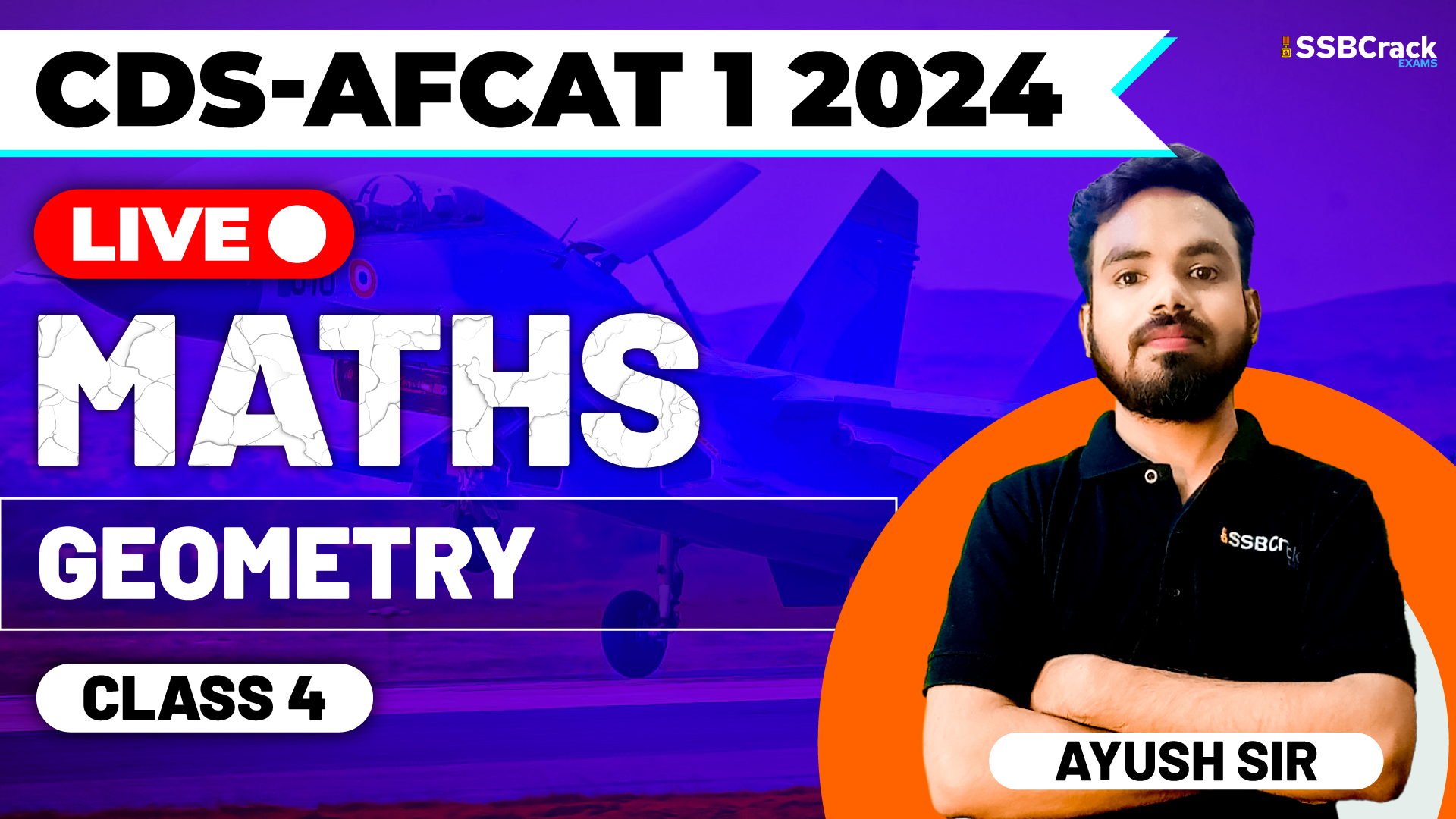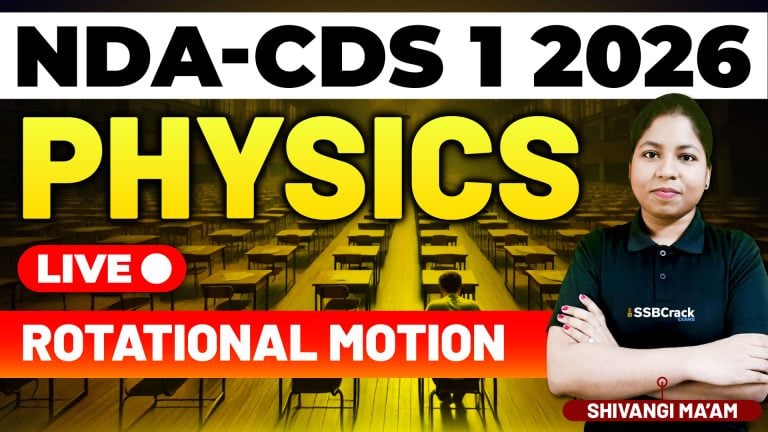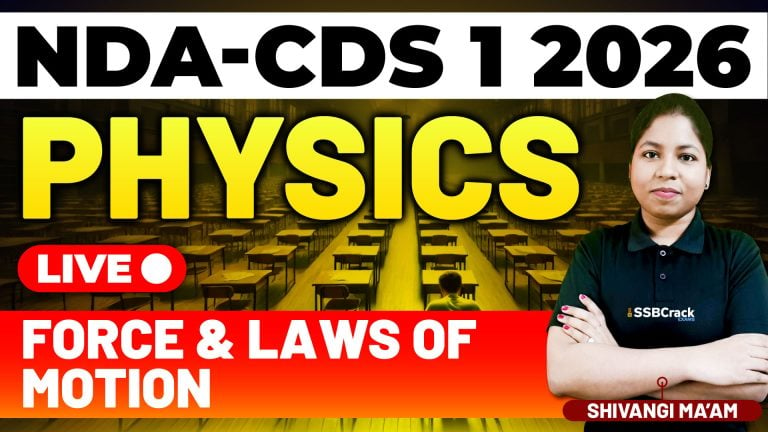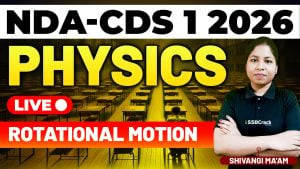Geometry, with its intricate web of shapes and spatial relationships, takes center stage in the AFCAT-CDS 1 2024 Exam Math Geometry Class 4. This live session transcended theoretical discussions, focusing on the practical application of geometric concepts through the exploration of previous year and important questions. In this blog, we will unravel the key insights gained from the class, shedding light on the strategic approach to solving geometric problems and the significance of revisiting past exam questions.
Revisiting Core Concepts: The class began with a brief revisiting of core geometric concepts, ensuring participants had a solid foundation before delving into the practical application of these principles. From lines and angles to triangles and circles, the essentials of geometry were recapped, setting the stage for the strategic problem-solving that would follow.
- Problem-Solving Strategies: The class didn’t just present problems; it equipped participants with problem-solving strategies. Emphasis was placed on recognizing patterns, identifying key theorems applicable to specific scenarios, and adopting a systematic approach to dissect and conquer geometric puzzles.
Previous Year Questions: A significant portion of the class was dedicated to the discussion of previous year questions—a valuable resource for understanding the exam pattern, level of difficulty, and the types of problems that candidates might encounter.
- Exam Pattern Insights: By dissecting previous year questions, participants gained insights into the recurring themes and patterns that typically appear in the AFCAT-CDS 1 2024 Exam. This understanding is invaluable for candidates seeking to align their preparation with the exam’s expectations.
- Level of Difficulty Analysis: The class facilitated an analysis of the level of difficulty associated with previous year questions. This not only prepared participants for the challenges they might face in the exam but also equipped them with a realistic assessment of their current proficiency in geometric problem-solving.
- Strategic Time Management: Time is a precious commodity in any exam, and the class provided strategies for effectively managing time while solving geometric problems. Participants learned to identify quick-solving techniques and prioritize questions based on their level of difficulty.
Important Questions Discussion: The class didn’t stop at previous year questions; it extended to a comprehensive exploration of important questions related to geometry. These questions were carefully curated to cover a wide spectrum of topics within the geometric landscape.
- Diverse Problem Scenarios: Participants were presented with diverse problem scenarios, each designed to test their understanding of different geometric concepts. From intricate angle relationships to complex triangle and circle problems, the class ensured that candidates were well-versed in handling a variety of situations.
- Application of Multiple Concepts: The importance of understanding the interconnectedness of geometric concepts was emphasized. Many questions required the application of multiple theorems and rules, challenging participants to synthesize their knowledge and apply it strategically.
Practical Examples and Real-world Application: Throughout the class, theoretical discussions were complemented by practical examples that mirrored real-world problem-solving scenarios. Participants were not just solving equations; they were navigating through geometric landscapes, applying their knowledge to arrive at practical solutions.
- Scenario-based Learning: Practical examples were presented in the form of scenarios that candidates might encounter in real-life problem-solving situations. This approach ensured that participants were not only proficient in theoretical concepts but were also adept at translating that knowledge into practical solutions.
- Problem Solving as a Skill: The emphasis was not just on obtaining the correct answers but on developing problem-solving skills as a valuable asset. Participants were encouraged to think critically, analyze the given information, and strategize their approach before delving into the solution.
Conclusion: AFCAT-CDS 1 2024 Exam Math Geometry Class 4 wasn’t just a journey through the theoretical landscape of geometry; it was a strategic exploration of how to decode geometric puzzles with precision and confidence. By revisiting core concepts, dissecting previous year questions, and delving into important problems, participants left the class armed with not only theoretical knowledge but also the skills needed to navigate the geometric challenges of the upcoming exam.
The focus on problem-solving strategies, time management, and real-world application ensures that aspirants are well-prepared to tackle the diverse array of questions they may encounter. As candidates continue their preparation journey, the insights gained from Geometry Class 4 will serve as a valuable asset. Armed with a strategic approach to problem-solving and a comprehensive understanding of geometric principles, participants are now better equipped to tackle the geometric dimension of the AFCAT-CDS 1 2024 Exam with confidence and precision. The geometric puzzles, once perceived as daunting, have been demystified, thanks to the comprehensive insights and practical knowledge imparted in AFCAT-CDS 1 2024 Exam Math Geometry Class 4.


















